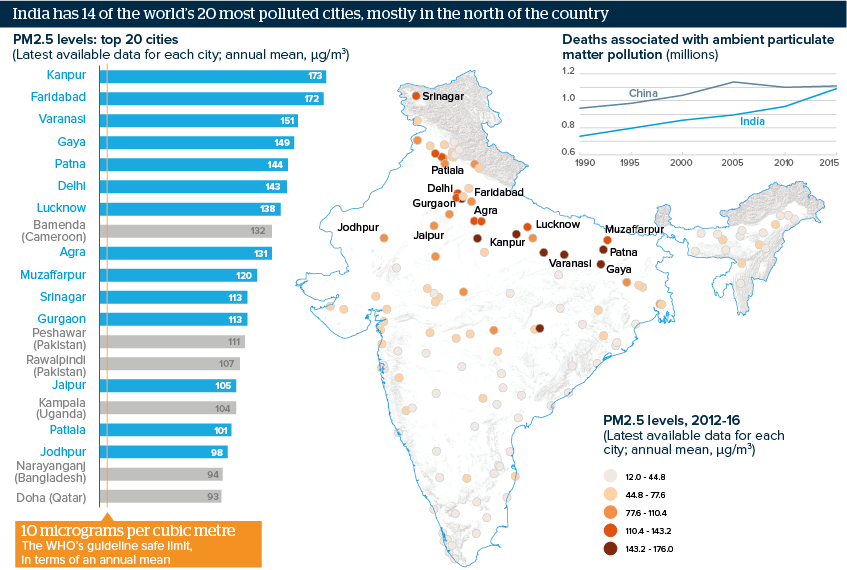Indian cities face fight to curb pollution
The country has some of the most polluted cities in the world
Source: Ambient Air Quality Database, WHO, April 2018; Global Burden of Disease
Outlook
According to the World Health Organization (WHO)’s April 2018 Ambient Air Quality Database, India has some of the world’s most polluted cities in terms of fine particulate matter or PM2.5.
The pollution is largely caused by industrial and vehicle emissions, construction dust and crop burning. Toxic smog in the country’s more industrial north is worse in the winter. The WHO recommended that India follow the measures taken by China to curb pollution.
India’s environment ministry reacted to the WHO’s data by suggesting it may spend around 7 billion rupees (104 million dollars) this fiscal year on establishing air-quality monitoring systems and purchasing water sprinklers.
Impacts
- India may miss its revised 2022 target for ensuring that coal-fired power plants confirm to new emission standards.
- Political tensions between different states may stymie cooperation over stopping illegal crop-burning.
- Health risks from high pollution levels in India’s cities will reduce tourism and dissuade prospective investors.
- The environment ministry will raise the pressure on municipal governments to produce anti-pollution plans.
- Delhi, as the capital, will see concerted efforts to reduce pollution through investment in technology to reduce dust.
See also
- India will press on with capital city redevelopment - Dec 31, 2020
- India will struggle to meet environmental challenges - Jul 15, 2020
- India protests bring political and economic fallout - May 24, 2018
- India may ease capital’s smog problem in the long term - Dec 28, 2017
- More graphic analysis
